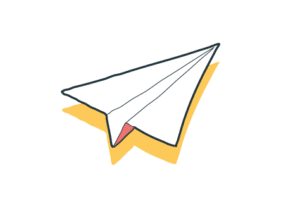Thank you!
We received your application and we will be in touch soon. In the meantime please consider subscribing to our newsletter:

The rehabilitation of Karantina Public Park is a project implemented in response to the devastating Beirut Port Blast. To ensure the park’s rehabilitation reflects the needs of Karantina’s residents, we conducted a series of participatory workshops with the children and adolescents in the area. We believe that their input in the design process is fundamental for creating a space that will actually be used by the community, and for which they will feel a sense of ownership.
The co-design activities we used were adapted to suit the needs of the different children participating. Our means of engagement therefore varied depending on the group of children we were working with. With younger children, we used storytelling as a way of stimulating their imagination around the playground space. For the older children, we used role play to encourage them to think critically and creatively about how the new park could look.
With the younger children (aged 5-10) children were encouraged to draw how they might like their park to look. To give them a starting point, we told them the story of Farfour, a bird who had found this playpark and wanted the children to design him and his friends some new play items. Children narrated and drew their ideas for the new space. Clear themes stood out, amongst conventional play items such as swings and slides, their drawings showed that they valued colour, inspiring shapes, greenery and water.
“I want a slide big enough so I can slide holding hands with my friends.”
Child participant, female, 9 Years Old
Children’s drawings also showed that they enjoyed playing amongst different levels. Their drawings contained tree houses, mountains and tall slides. Participant’s desire to be close to nature was also clear from their drawings. They drew flowers and fruit trees.
With the older children (aged 11-18 years) we used “Let’s be architects” tool. They had high vis-jackets, a 3D model drawing of the park and the authority to change what they wanted. They could explain these changes by altering the drawings and using coloured stickers to designate different zones of the park. Some of the children were very pragmatic with their suggestions: we should fix the swings, make a faster zip-line and use better material for a new slide. Their suggestions also incorporated new features like more benches and more greenery.
There is also a room in the park which can be used for quieter activities. Children gave us suggestions as to how they thought it could be used to meet the needs of them and other children. Some of the teenage girls thought that it could be used for an art exhibition, and the boys suggested that this could be about the recent explosion and telling the stories of those affected. Many of the children also expressed the desire for the space to be a place of serenity where they could come read, play quiet games and store their toys. We also spoke to residents in the neighbourhood who thought this space could be used to enrich children’s development. Why not show educational documentaries, one man told us, or get some computers where children can learn something new?
We received your application and we will be in touch soon. In the meantime please consider subscribing to our newsletter:
